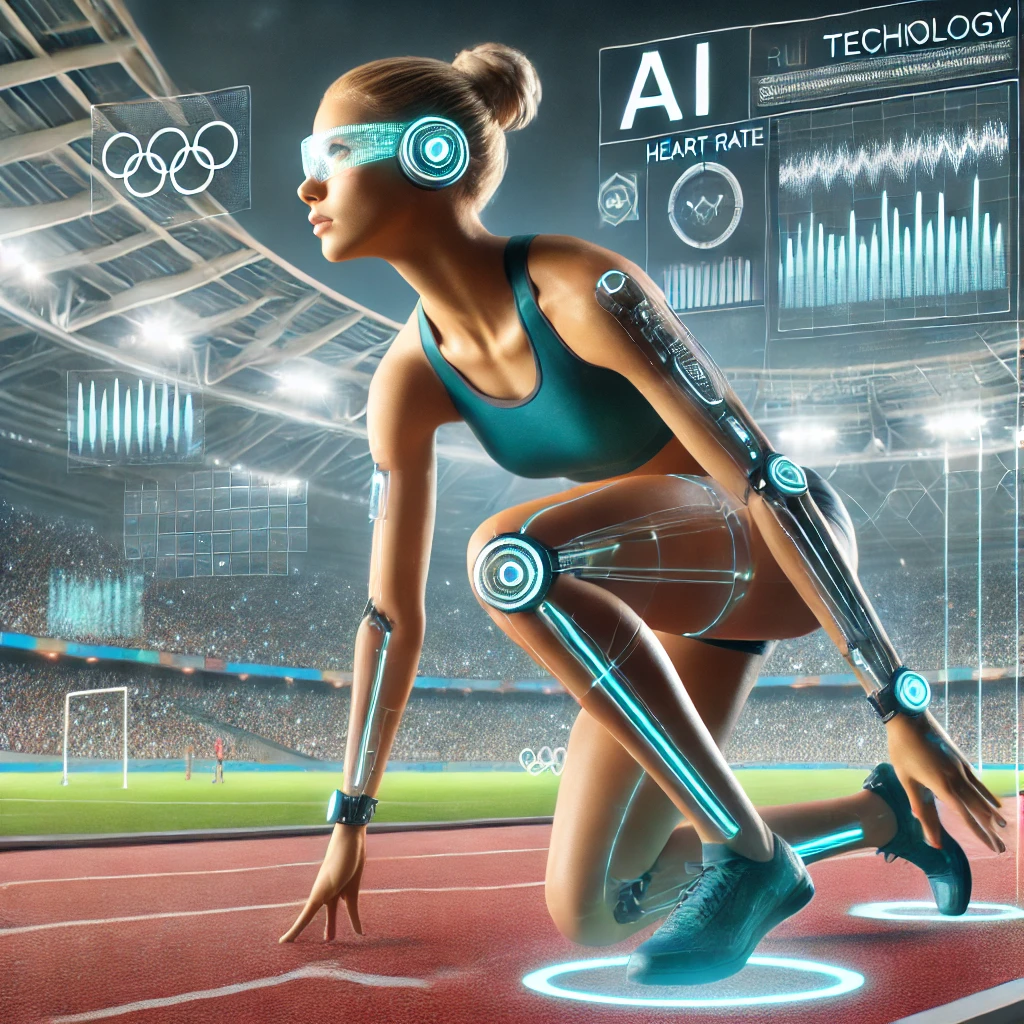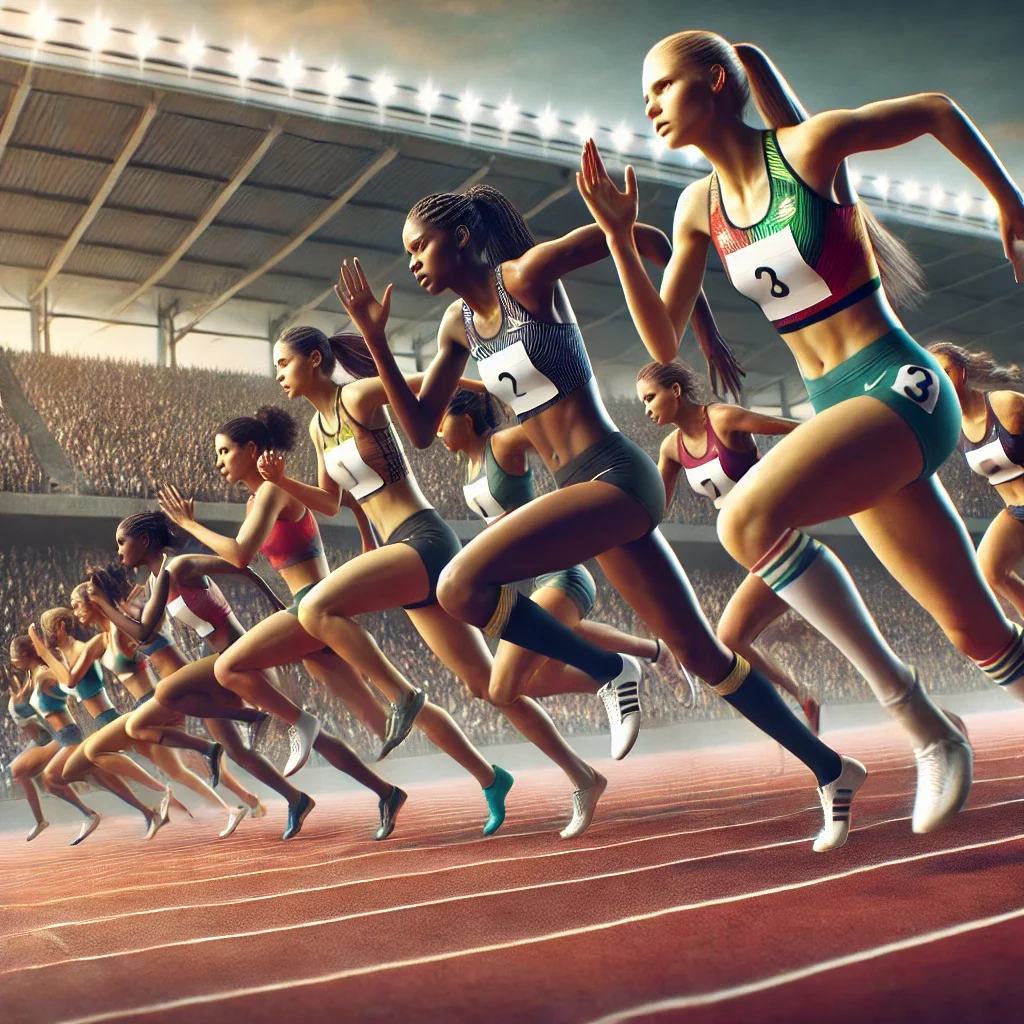advertisement
2024 Olympics: The Invisible Hand Of Technology

In the hushed intensity of the 100-metre dash, where each millisecond stretches like an eternity, the naked eye is outmatched. Technology steps in, ensuring that the outcomes are indisputable, scrutinising each stride with a precision no human could ever hope to match. As athletes thunder down the track, the silent sentinels of the digital age—the high-speed cameras, sensors, and algorithms—stand ready, capturing each fraction of movement in exquisite detail.
Enter technology. Who can forget how on 4 August Noah Lyles and Kishane Thompson ‘tied’ for gold in the men’s 100-metre final with a time of 9.79? That was before Lyles was awarded the gold medal for beating Thompson by 0.005 of a second (9.784 to 9.789). Then there’s the swim-off between Melvin Imoudu and Ludovico Blu Art Viberti for the men’s 100-metre breaststroke gold following a tie. Imoudu splashed his way to a win with a whisker – 0.21 seconds.
The marriage between technology and sport has a long history, but the Olympics offer a particularly stark display of this union’s evolution. The Games have always been a stage for human achievement, but increasingly, they are a showcase for technological prowess.
advertisement
Take timing, for instance. Once the domain of handheld stopwatches, it’s now governed by systems so advanced they can detect the exact moment a sprinter leaves the starting blocks or a swimmer touches the pool wall. Omega, the official timekeeper of the Olympics since 1932, uses technology that’s evolved far beyond its humble beginnings. The latest iteration involves a combination of motion sensors, quantum timers, and AI algorithms that reduce the possibility of error to nearly zero. In the realm of elite sport, where the difference between glory and heartbreak is often measured in thousandths of a second, this accuracy is paramount.
But timing is just the tip of the iceberg. In the world of gymnastics, for example, technology has taken on an even more complex role. Simone Biles, the gymnastics superstar, employs video analysis to refine her routines. By reviewing footage of her performances, she and her coaches can dissect her movements, focusing on technique and execution to enhance her scores. This technology allows for precise adjustments to her routines.

advertisement
Meanwhile, judges still sit in their positions of authority, but now they are aided by AI-driven systems that analyse a gymnast’s routine in real-time, assessing angles, rotations, and landings with an objectivity that no human can claim. The system provides a second opinion, a mechanical referee to back up or challenge the human call. The fear that technology would strip the sport of its artistry has proven unfounded. Instead, it has added a new layer of credibility, ensuring that the medalists are chosen as fairly as possible.
Security at the Olympics has also been redefined by technological innovation. Gone are the days when a few metal detectors and some burly guards were enough to secure an event of this magnitude. Today, surveillance drones, facial recognition software, and sophisticated data analytics are part of the arsenal deployed to keep athletes and spectators safe. Every entry point, every corner of the venue, is monitored, creating a digital fortress where potential threats are identified and neutralised long before they can manifest.
This shift is not just about preventing violence; it’s about creating an environment where the focus remains on the competition, not the lurking spectre of what could go wrong. And who can blame the powers that be with the history of the Games experiencing a variety of cyber threats? The 2018 Winter Olympics, Pyeongchang, was the target of the Olympic Destroyer malware, disrupting IT systems during the opening ceremony. The 2016 Rio de Janeiro Olympics also faced numerous phishing attacks, data breaches, and even attempted financial fraud. Besides this, The Grand Palais exhibition hall in Paris experienced a ransomware attack targeting the central computer system. Officials stated no harm was done with the Games proceeding as it were.
advertisement
And then there’s the spectator experience, which has been completely transformed. For those watching at home, the Games are no longer just a television event; they are an interactive experience. High-definition broadcasts, augmented reality overlays, and data-rich companion apps allow viewers to immerse themselves in the action like never before. Every statistic, every athlete’s backstory, and every strategic nuance is available at the touch of a button. This digital augmentation of the viewing experience blurs the line between being a spectator and being a participant, drawing fans deeper into the narrative of the Games.
But perhaps the most significant change brought by technology is in how athletes prepare for the Olympics. Training has become a high-tech endeavour, with wearables tracking every heartbeat, every calorie burned, every minute of sleep. Coaches analyse this data to fine-tune training regimens, finding the perfect balance between pushing their athletes to their limits and avoiding the injuries that could derail years of preparation.

Virtual reality simulations allow athletes to practice in conditions that mimic the Olympic stage, so by the time they arrive, the environment feels familiar, reducing the stress that can come with performing on the world’s biggest stage. Biles, for instance, utilised virtual reality (VR) technology to simulate competition environments. This immersive training helps her adapt to the pressures of performing in front of large audiences, allowing her to practice routines in a setting that mimics the Olympic stage.
All these advancements might seem to push us towards a future where technology could overshadow the very human element that makes the Olympics so compelling. But that hasn’t happened. Instead, technology has become an enabler, amplifying the feats of human strength, speed, and skill that we come to the Games to see. It has made the playing field more level, the outcomes more certain, and the experience richer for everyone involved.
As the Olympics continue to evolve, so, too, will the technology that supports it. The two are inextricably linked, each pushing the other to new heights. And while we marvel at the records being broken, the stories of triumph and defeat, we should also take a moment to appreciate the invisible hand of technology guiding the way, ensuring that the best truly rise to the top.